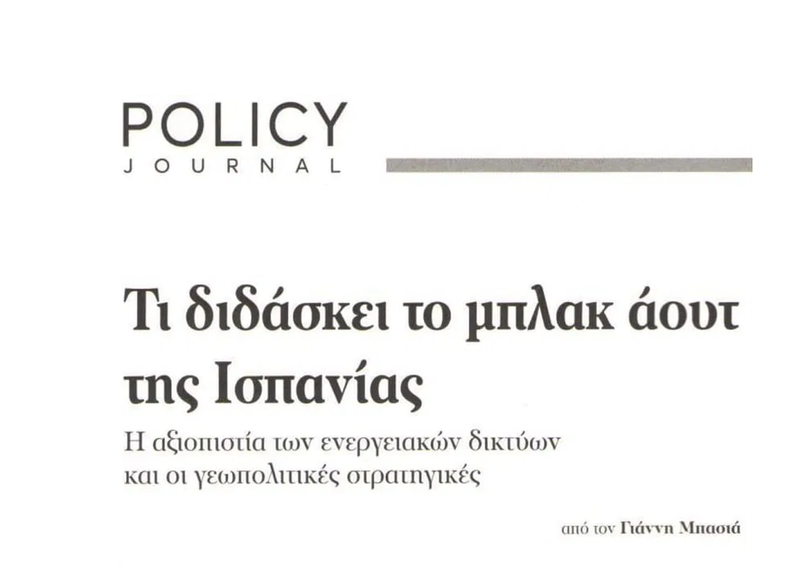What Spain's blackout teaches-The reliability of energy grids and geopolitical strategies

According to European regulations, the network interconnection rate should have been 10% in 2020 but remain below 3%. The widespread integration of renewable energy sources into European networks may increase their vulnerability, raising the risk of instability. Before the full implementation of the EU's "Net-Zero" policy, significant investments are needed to maintain and expand networks to ensure their reliability and prevent future power outages.
According to the International Energy Agency (IEA), the global need for expansion and replacement of electricity networks is estimated at over 80 million kilometers by 2040. The United States has already announced $3.5 billion in grants for grid upgrade projects. The EU estimates that investment in electricity networks in Europe will reach €584 billion by 2030. With regard to Northern Europe, the European Network of Transmission System Operators for Electricity (ENTSO-E) recently published a study conducted under the EU regulation by transmission system operators from Central Europe and the Nordic Zone. The study aimed to maximize economic efficiency and cross-border trade opportunities while ensuring security of supply.
The increasing interconnection of energy networks goes beyond purely technical issues, affecting international cooperation and economic stability while ensuring the distribution of electricity and fuels. However, this interdependence introduces new vulnerabilities, both technical and geopolitical, as cyberattacks and strategic pressures can disrupt critical infrastructure. The integration of renewable energy sources, while contributing to the energy mix, poses challenges to the stability of the electricity grid. Unlike conventional sources such as fossil fuels and nuclear energy, solar and wind installations exhibit fluctuations in production, requiring advanced storage and balancing mechanisms. At the same time, the increasing digitization of networks makes them vulnerable to cyberattacks, with hostile actors able to disrupt their operation. The interconnection of energy networks is a double-edged sword: on the one hand, it enhances stability and cooperation at the global level, but on the other, it exposes critical infrastructure to new risks, from technical failures to geopolitical pressures.
From Policy Journal, May-June2025, V. 8, p.26-36 (in Greek)